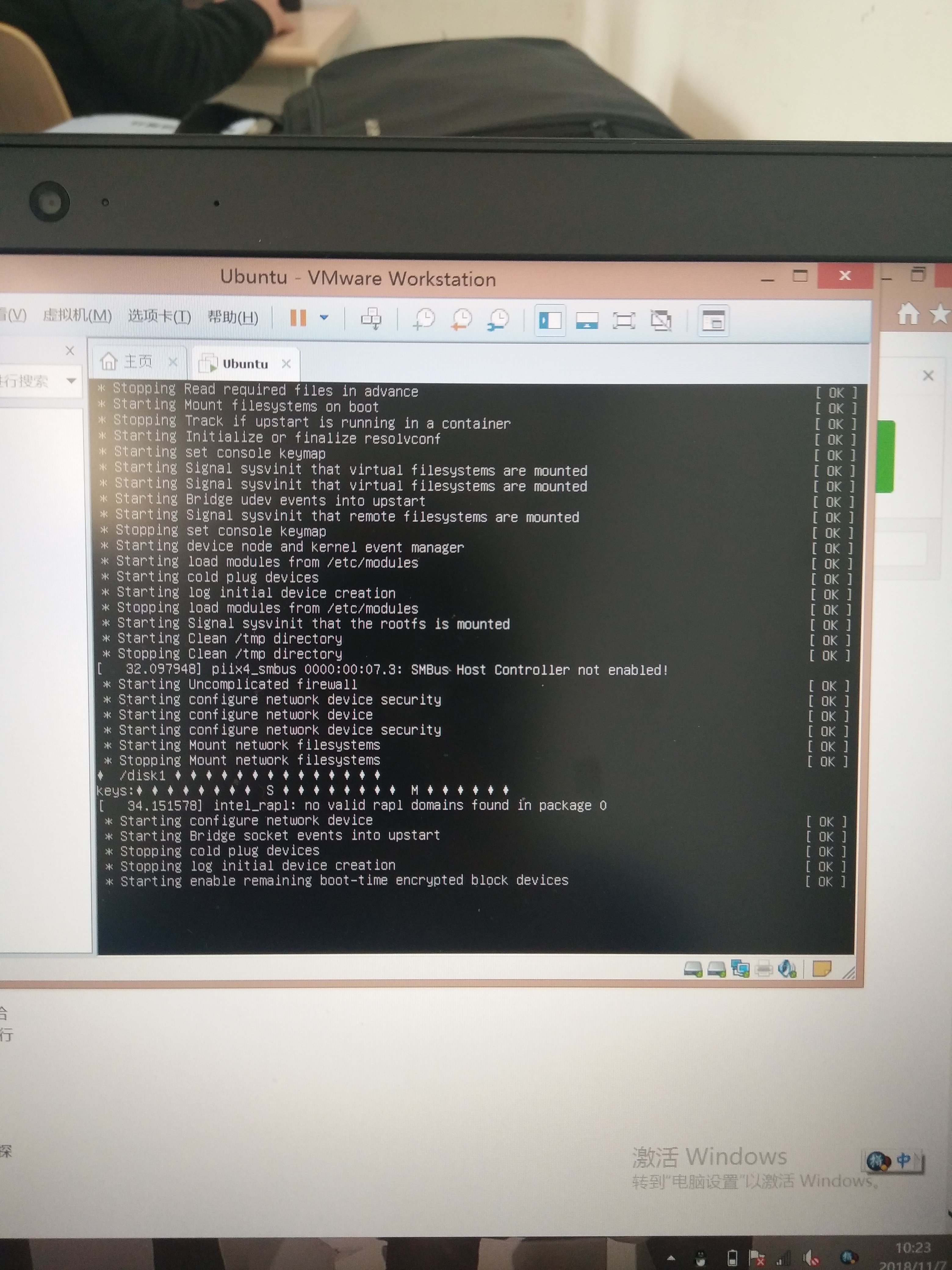可以将文章内容翻译成中文,广告屏蔽插件可能会导致该功能失效(如失效,请关闭广告屏蔽插件后再试):
问题:
// let\'s say there is a list of 1000+ URLs
string[] urls = { \"http://google.com\", \"http://yahoo.com\", ... };
// now let\'s send HTTP requests to each of these URLs in parallel
urls.AsParallel().ForAll(async (url) => {
var client = new HttpClient();
var html = await client.GetStringAsync(url);
});
Here is the problem, it starts 1000+ simultaneous web requests. Is there an easy way to limit the concurrent amount of these async http requests? So that no more than 20 web pages are downloaded at any given time. How to do it in the most efficient manner?
回答1:
You can definitely do this in the latest versions of async for .NET, using .NET 4.5 Beta. The previous post from \'usr\' points to a good article written by Stephen Toub, but the less announced news is that the async semaphore actually made it into the Beta release of .NET 4.5
If you look at our beloved SemaphoreSlim class (which you should be using since it\'s more performant than the original Semaphore), it now boasts the WaitAsync(...) series of overloads, with all of the expected arguments - timeout intervals, cancellation tokens, all of your usual scheduling friends :)
Stephen\'s also written a more recent blog post about the new .NET 4.5 goodies that came out with beta see What’s New for Parallelism in .NET 4.5 Beta.
Last, here\'s some sample code about how to use SemaphoreSlim for async method throttling:
public async Task MyOuterMethod()
{
// let\'s say there is a list of 1000+ URLs
var urls = { \"http://google.com\", \"http://yahoo.com\", ... };
// now let\'s send HTTP requests to each of these URLs in parallel
var allTasks = new List<Task>();
var throttler = new SemaphoreSlim(initialCount: 20);
foreach (var url in urls)
{
// do an async wait until we can schedule again
await throttler.WaitAsync();
// using Task.Run(...) to run the lambda in its own parallel
// flow on the threadpool
allTasks.Add(
Task.Run(async () =>
{
try
{
var client = new HttpClient();
var html = await client.GetStringAsync(url);
}
finally
{
throttler.Release();
}
}));
}
// won\'t get here until all urls have been put into tasks
await Task.WhenAll(allTasks);
// won\'t get here until all tasks have completed in some way
// (either success or exception)
}
Last, but probably a worthy mention is a solution that uses TPL-based scheduling. You can create delegate-bound tasks on the TPL that have not yet been started, and allow for a custom task scheduler to limit the concurrency. In fact, there\'s an MSDN sample for it here:
See also TaskScheduler .
回答2:
Unfortunately, the .NET Framework is missing most important combinators for orchestrating parallel async tasks. There is no such thing built-in.
Look at the AsyncSemaphore class built by the most respectable Stephen Toub. What you want is called a semaphore, and you need an async version of it.
回答3:
If you have an IEnumerable (ie. strings of URL s) and you want to do an I/O bound operation with each of these (ie. make an async http request) concurrently AND optionally you also want to set the maximum number of concurrent I/O requests in real time, here is how you can do that. This way you do not use thread pool et al, the method uses semaphoreslim to control max concurrent I/O requests similar to a sliding window pattern one request completes, leaves the semaphore and the next one gets in.
usage:
await ForEachAsync(urlStrings, YourAsyncFunc, optionalMaxDegreeOfConcurrency);
public static Task ForEachAsync<TIn>(
IEnumerable<TIn> inputEnumerable,
Func<TIn, Task> asyncProcessor,
int? maxDegreeOfParallelism = null)
{
int maxAsyncThreadCount = maxDegreeOfParallelism ?? DefaultMaxDegreeOfParallelism;
SemaphoreSlim throttler = new SemaphoreSlim(maxAsyncThreadCount, maxAsyncThreadCount);
IEnumerable<Task> tasks = inputEnumerable.Select(async input =>
{
await throttler.WaitAsync().ConfigureAwait(false);
try
{
await asyncProcessor(input).ConfigureAwait(false);
}
finally
{
throttler.Release();
}
});
return Task.WhenAll(tasks);
}
回答4:
Theo Yaung example is nice, but there is a variant without list of waiting tasks.
class SomeChecker
{
private const int ThreadCount=20;
private CountdownEvent _countdownEvent;
private SemaphoreSlim _throttler;
public Task Check(IList<string> urls)
{
_countdownEvent = new CountdownEvent(urls.Count);
_throttler = new SemaphoreSlim(ThreadCount);
return Task.Run( // prevent UI thread lock
async () =>{
foreach (var url in urls)
{
// do an async wait until we can schedule again
await _throttler.WaitAsync();
ProccessUrl(url); // NOT await
}
//instead of await Task.WhenAll(allTasks);
_countdownEvent.Wait();
});
}
private async Task ProccessUrl(string url)
{
try
{
var page = await new WebClient()
.DownloadStringTaskAsync(new Uri(url));
ProccessResult(page);
}
finally
{
_throttler.Release();
_countdownEvent.Signal();
}
}
private void ProccessResult(string page){/*....*/}
}
回答5:
There are a lot of pitfalls and direct use of a semaphore can be tricky in error cases, so I would suggest to use AsyncEnumerator NuGet Package instead of re-inventing the wheel:
// let\'s say there is a list of 1000+ URLs
string[] urls = { \"http://google.com\", \"http://yahoo.com\", ... };
// now let\'s send HTTP requests to each of these URLs in parallel
await urls.ParallelForEachAsync(async (url) => {
var client = new HttpClient();
var html = await client.GetStringAsync(url);
}, maxDegreeOfParallelism: 20);
回答6:
Just a more succinct version of https://stackoverflow.com/a/10810730/1186165:
static async Task WhenAll(IEnumerable<Task> tasks, int maxThreadCount) {
using (var guard = new SemaphoreSlim(initialCount: maxThreadCount)) {
await Task.WhenAll(tasks.Select(async task => {
await guard.WaitAsync();
return task.ContinueWith(t => guard.Release());
}));
}
}
回答7:
SemaphoreSlim can be very helpful here. Here\'s the extension method I\'ve created.
/// <summary>
/// Concurrently Executes async actions for each item of <see cref=\"IEnumerable<typeparamref name=\"T\"/>
/// </summary>
/// <typeparam name=\"T\">Type of IEnumerable</typeparam>
/// <param name=\"enumerable\">instance of <see cref=\"IEnumerable<typeparamref name=\"T\"/>\"/></param>
/// <param name=\"action\">an async <see cref=\"Action\" /> to execute</param>
/// <param name=\"maxActionsToRunInParallel\">Optional, max numbers of the actions to run in parallel,
/// Must be grater than 0</param>
/// <returns>A Task representing an async operation</returns>
/// <exception cref=\"ArgumentOutOfRangeException\">If the maxActionsToRunInParallel is less than 1</exception>
public static async Task ForEachAsyncConcurrent<T>(
this IEnumerable<T> enumerable,
Func<T, Task> action,
int? maxActionsToRunInParallel = null)
{
if (maxActionsToRunInParallel.HasValue)
{
using (var semaphoreSlim = new SemaphoreSlim(
maxActionsToRunInParallel.Value, maxActionsToRunInParallel.Value))
{
var tasksWithThrottler = new List<Task>();
foreach (var item in enumerable)
{
// Increment the number of currently running tasks and wait if they are more than limit.
await semaphoreSlim.WaitAsync();
tasksWithThrottler.Add(Task.Run(async () =>
{
await action(item).ContinueWith(res =>
{
// action is completed, so decrement the number of currently running tasks
semaphoreSlim.Release();
});
}));
}
// Wait for all of the provided tasks to complete.
await Task.WhenAll(tasksWithThrottler.ToArray());
}
}
else
{
await Task.WhenAll(enumerable.Select(item => action(item)));
}
}
Sample Usage:
await enumerable.ForEachAsyncConcurrent(
async item =>
{
await SomeAsyncMethod(item);
},
5);
回答8:
Although 1000 tasks might be queued very quickly, the Parallel Tasks library can only handle concurrent tasks equal to the amount of CPU cores in the machine. That means that if you have a four-core machine, only 4 tasks will be executing at a given time (unless you lower the MaxDegreeOfParallelism).
回答9:
Parallel computations should be used for speeding up CPU-bound operations. Here we are talking about I/O bound operations. Your implementation should be purely async, unless you\'re overwhelming the busy single core on your multi-core CPU.
EDIT I like the suggestion made by usr to use an \"async semaphore\" here.
回答10:
Use MaxDegreeOfParallelism, which is an option you can specify in Parallel.ForEach():
var options = new ParallelOptions { MaxDegreeOfParallelism = 20 };
Parallel.ForEach(urls, options,
url =>
{
var client = new HttpClient();
var html = client.GetStringAsync(url);
// do stuff with html
});
回答11:
Old question, new answer. @vitidev had a block of code that was reused almost intact in a project I reviewed. After discussing with a few colleagues one asked \"Why don\'t you just use the built-in TPL methods?\" ActionBlock looks like the winner there. https://msdn.microsoft.com/en-us/library/hh194773(v=vs.110).aspx. Probably won\'t end up changing any existing code but will definitely look to adopt this nuget and reuse Mr. Softy\'s best practice for throttled parallelism.
回答12:
Essentially you\'re going to want to create an Action or Task for each URL that you want to hit, put them in a List, and then process that list, limiting the number that can be processed in parallel.
My blog post shows how to do this both with Tasks and with Actions, and provides a sample project you can download and run to see both in action.
With Actions
If using Actions, you can use the built-in .Net Parallel.Invoke function. Here we limit it to running at most 20 threads in parallel.
var listOfActions = new List<Action>();
foreach (var url in urls)
{
var localUrl = url;
// Note that we create the Task here, but do not start it.
listOfTasks.Add(new Task(() => CallUrl(localUrl)));
}
var options = new ParallelOptions {MaxDegreeOfParallelism = 20};
Parallel.Invoke(options, listOfActions.ToArray());
With Tasks
With Tasks there is no built-in function. However, you can use the one that I provide on my blog.
/// <summary>
/// Starts the given tasks and waits for them to complete. This will run, at most, the specified number of tasks in parallel.
/// <para>NOTE: If one of the given tasks has already been started, an exception will be thrown.</para>
/// </summary>
/// <param name=\"tasksToRun\">The tasks to run.</param>
/// <param name=\"maxTasksToRunInParallel\">The maximum number of tasks to run in parallel.</param>
/// <param name=\"cancellationToken\">The cancellation token.</param>
public static async Task StartAndWaitAllThrottledAsync(IEnumerable<Task> tasksToRun, int maxTasksToRunInParallel, CancellationToken cancellationToken = new CancellationToken())
{
await StartAndWaitAllThrottledAsync(tasksToRun, maxTasksToRunInParallel, -1, cancellationToken);
}
/// <summary>
/// Starts the given tasks and waits for them to complete. This will run the specified number of tasks in parallel.
/// <para>NOTE: If a timeout is reached before the Task completes, another Task may be started, potentially running more than the specified maximum allowed.</para>
/// <para>NOTE: If one of the given tasks has already been started, an exception will be thrown.</para>
/// </summary>
/// <param name=\"tasksToRun\">The tasks to run.</param>
/// <param name=\"maxTasksToRunInParallel\">The maximum number of tasks to run in parallel.</param>
/// <param name=\"timeoutInMilliseconds\">The maximum milliseconds we should allow the max tasks to run in parallel before allowing another task to start. Specify -1 to wait indefinitely.</param>
/// <param name=\"cancellationToken\">The cancellation token.</param>
public static async Task StartAndWaitAllThrottledAsync(IEnumerable<Task> tasksToRun, int maxTasksToRunInParallel, int timeoutInMilliseconds, CancellationToken cancellationToken = new CancellationToken())
{
// Convert to a list of tasks so that we don\'t enumerate over it multiple times needlessly.
var tasks = tasksToRun.ToList();
using (var throttler = new SemaphoreSlim(maxTasksToRunInParallel))
{
var postTaskTasks = new List<Task>();
// Have each task notify the throttler when it completes so that it decrements the number of tasks currently running.
tasks.ForEach(t => postTaskTasks.Add(t.ContinueWith(tsk => throttler.Release())));
// Start running each task.
foreach (var task in tasks)
{
// Increment the number of tasks currently running and wait if too many are running.
await throttler.WaitAsync(timeoutInMilliseconds, cancellationToken);
cancellationToken.ThrowIfCancellationRequested();
task.Start();
}
// Wait for all of the provided tasks to complete.
// We wait on the list of \"post\" tasks instead of the original tasks, otherwise there is a potential race condition where the throttler\'s using block is exited before some Tasks have had their \"post\" action completed, which references the throttler, resulting in an exception due to accessing a disposed object.
await Task.WhenAll(postTaskTasks.ToArray());
}
}
And then creating your list of Tasks and calling the function to have them run, with say a maximum of 20 simultaneous at a time, you could do this:
var listOfTasks = new List<Task>();
foreach (var url in urls)
{
var localUrl = url;
// Note that we create the Task here, but do not start it.
listOfTasks.Add(new Task(async () => await CallUrl(localUrl)));
}
await Tasks.StartAndWaitAllThrottledAsync(listOfTasks, 20);




